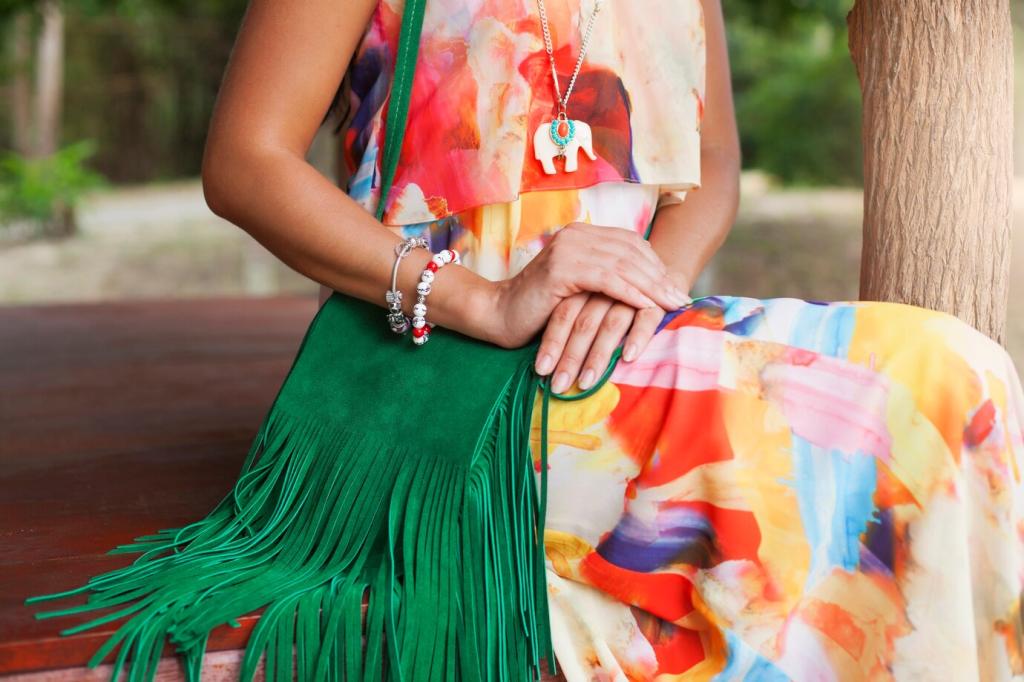The Rise of Sustainable Fashion Designers
The global fashion industry has undergone a profound transformation in recent years, with sustainability emerging as a driving force behind innovation and change. The rise of sustainable fashion designers marks a new era where creativity and consciousness intersect, reshaping the way garments are conceived, produced, and consumed. This growing movement reflects a collective response to pressing ecological and ethical concerns, as designers spearhead efforts to create clothing that honors both people and the planet. As sustainable practices gain traction, they challenge the industry’s traditional paradigms and pave the way for a more responsible and inspired future in fashion.

Shifting Paradigms in Fashion Creation

Embracing Slow Fashion Principles
Slow fashion is a foundational philosophy among sustainable designers, encouraging clothing that is made with care, durability, and timeless appeal. This mindset rejects the wastefulness of fast fashion by focusing on quality craftsmanship and classic aesthetics that transcend seasons. Designers who champion slow fashion invest time and resources into their creations, ensuring that each piece tells a story and is intended to be cherished for years. This approach not only reduces waste but also fosters a deeper relationship between the wearer and their wardrobe, supporting more mindful consumption practices and contributing to a culture where value is measured by longevity, not disposability.

Utilizing Regenerative Materials
One major hallmark of sustainable fashion design is the use of regenerative and low-impact materials. Designers are experimenting with organic cotton, hemp, recycled fibers, and even cutting-edge innovations such as mushroom leather and fabrics spun from ocean plastics. These materials are sourced with care to minimize harm to the environment, often focusing on renewability and responsible harvesting. By choosing regenerative options, designers significantly reduce their ecological footprint while also inspiring the industry to consider the origins and life cycle of every garment. This shift not only addresses resource scarcity but also sets a precedent for transparency and accountability throughout the supply chain.

Localized and Ethical Production
Sustainable designers often opt for localized and ethical production practices to counter the exploitative labor models prevalent in traditional fashion. By collaborating with artisans and manufacturers within their own regions or ensuring fair labor conditions abroad, these designers establish more transparent and accountable supply chains. Local production reduces transportation emissions and strengthens community economies, while ethical labor practices ensure that the people who make the clothes are fairly compensated and work in safe conditions. This commitment lays a solid foundation for a fashion system that respects human dignity alongside environmental concerns, fostering a deeper sense of trust between brands and consumers.
Innovation Through Eco-Conscious Design
Circular Fashion Systems
Circular fashion is transforming the industry by rethinking the traditional linear model of production and disposal. Sustainable designers are at the forefront of this change, devising systems where garments are designed from inception with their afterlife in mind. This involves crafting clothing for easy disassembly, repair, or repurposing, ensuring materials can be recycled or biodegraded rather than ending up in landfills. By normalizing take-back programs and upcycling initiatives, these designers create closed-loop systems that mitigate waste and redefine what it means to own and wear clothing. The shift toward circularity ultimately makes the fashion industry more resilient, efficient, and in harmony with nature.
Technological Advancements in Sustainable Fashion
Technology plays a pivotal role in empowering sustainable designers to make meaningful progress. From digital pattern-making that reduces textile waste to blockchain systems that enhance supply chain traceability, technological advancements enable more efficient resource use and transparency. Virtual sample creation and 3D garment prototyping are minimizing the need for physical samples, thus curbing excess materials and energy consumption. Furthermore, innovative dyeing technologies significantly lower water and chemical usage. Through these advancements, designers are able to deliver high-quality garments with less impact, proving that marrying technology with sustainability is both feasible and essential.
Redefining Luxury with Sustainability
As consumers become increasingly discerning, the concept of luxury in fashion is being transformed by sustainable designers. Instead of centering luxury on exclusivity and extravagance, it is now being associated with integrity, transparency, and thoughtfully sourced materials. These designers prove that high-end craftsmanship can coexist with ethical responsibility, offering bespoke pieces that are as refined as they are eco-friendly. Limited-run collections made with natural dyes or responsibly sourced elements exemplify how luxury and sustainability are not mutually exclusive. This new narrative elevates sustainability to a sought-after luxury value, attracting customers who seek quality and conscience in their wardrobes.
Empowering Communities and Redefining Ethics
Supporting Artisans and Traditional Craft
Many sustainable designers actively preserve and celebrate traditional craftsmanship by collaborating with artisans around the world. These partnerships offer vital economic opportunities in communities where such skills have been passed down for generations, but are often at risk due to mass manufacturing. By spotlighting handwoven textiles, embroidery, and other time-honored techniques, designers not only ensure fair compensation but also help prevent cultural heritage from fading. This approach fosters mutual respect and cultural exchange, enriching designs with unique histories and empowering local economies that might otherwise be marginalized by mainstream fashion dynamics.
Fostering Social Justice in Fashion
Addressing issues of inequality, exploitation, and representation, sustainable designers are advocating for a fashion industry grounded in social justice. This includes ensuring fair wages, safe working conditions, and transparent supply chains, but it also expands to champion inclusivity in sizing, marketing, and design perspectives. These designers use their platforms to raise awareness about human rights abuses and to amplify the voices of those frequently overlooked in the mainstream narrative. Through advocacy and action, they are building a more equitable industry where every individual—regardless of background—can participate with dignity and pride.
Advocating for Diversity and Inclusion
A new generation of sustainable fashion designers views inclusivity as inseparable from environmental responsibility. They challenge traditional beauty standards and work to make fashion accessible and appealing to a diverse range of identities, body types, and abilities. By casting models from underrepresented backgrounds, designing versatile collections, and collaborating with marginalized communities, these designers champion fashion as a force for unity and representation. Their efforts are shifting the industry toward a landscape where diversity is not an afterthought but a fundamental pillar, making sustainability as much about people as it is about the planet.
